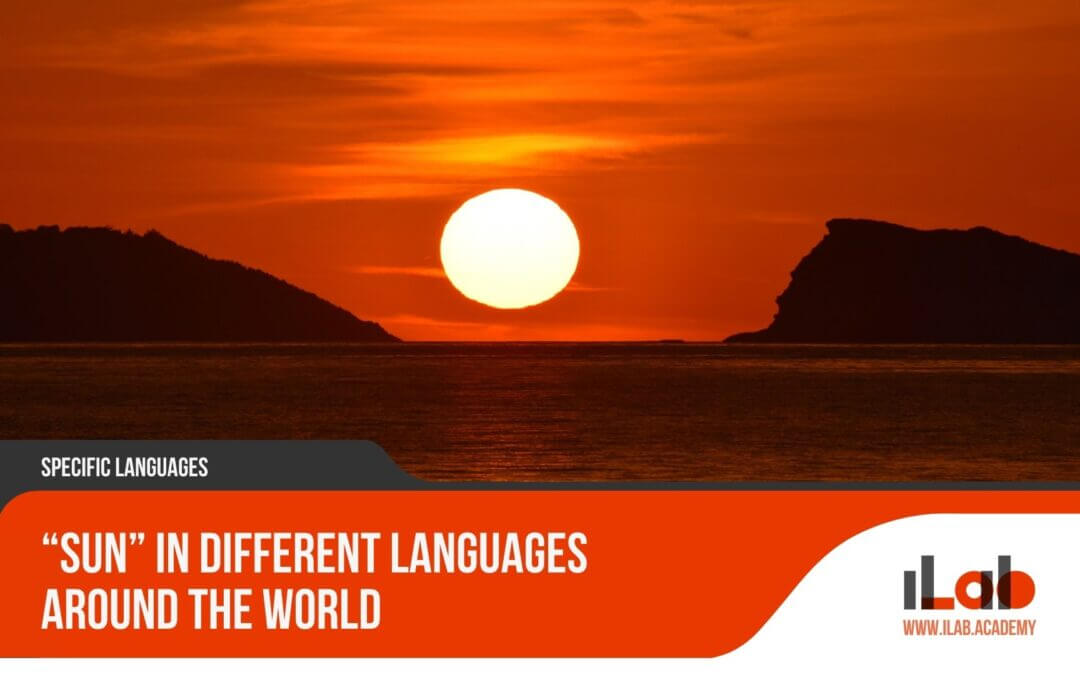Table of contents
Bali’s linguistic landscape is as intricate and diverse as its famed terraced rice fields. The island’s predominant language, Balinese, is not merely a communicative tool but a vessel of cultural identity, steeped in layers of social hierarchy and etiquette. Yet, the dominion of Balinese is not unchallenged; Indonesian, the official national language, permeates throughout, symbolizing unity in the archipelago’s vast diversity. This linguistic equilibrium is further nuanced by the presence of Sasak, regional dialects, and the increasing prevalence of English within the tourism sector. As we embark on a closer examination of the linguistic dynamics at play, one must consider the implications these languages have on the cultural integrity and social fabric of Bali. The island’s language conundrum, bridging the vernacular with the global, beckons a deeper understanding of how these languages coexist and influence each other, and what the future may hold for the linguistic heritage of Bali in an ever-evolving world.
Key Takeaways
- Bali is known for its vibrant culture and unique traditions, making it a popular tourist destination within Indonesia.
- Balinese is the indigenous language of the island, known locally as Basa Bali, and is an integral part of Balinese ceremonies, religious practices, and daily communication.
- Indonesian, known locally as Bahasa Indonesia, is the national language spoken throughout the archipelago, including Bali, and serves as a lingua franca for interethnic communication, education, media, and government.
- Bali’s proximity to other islands contributes to the linguistic diversity within the region, with other regional languages spoken by communities, such as Sasak on neighboring Lombok Island.
Balinese: The Indigenous Language of the Island
Balinese, locally known as Bali or Basa Bali, is the indigenous language of the Balinese people, intricately woven into the island’s cultural tapestry and daily life. As the vernacular of a population deeply rooted in tradition, Balinese is more than a means of communication; it is a carrier of identity and heritage. The language embodies a complex system of social hierarchy and respect, with different levels of speech used depending on the social status of the interlocutors. This linguistic stratification plays a pivotal role in maintaining the island’s social structure.
The script used to write Balinese, Aksara Bali, is an elaborate Brahmic script that is not only a tool for literacy but also an art form. It is characterized by its intricate and ornamental glyphs, which are often seen adorning temples, traditional literature, and sacred objects. The preservation of this script is considered vital to sustaining the cultural authenticity of Bali.
In the realm of the sacred, Balinese is indispensable. It is used extensively in Hindu ceremonies and religious practices on the island, marking events from birth to death and beyond. The language’s sonorous quality enriches prayers and chants, thereby elevating the spiritual experiences of devotees and participants.
Yet, the use of Balinese is not confined to formal or religious contexts. It pervades daily communication among locals, affirming its relevance in contemporary society. Despite the pressures of globalization and the prominence of Indonesian and English, Balinese remains a living language, actively spoken and cherished as a symbol of Balinese identity.
Indonesian: The National Language
While the Balinese language holds a special place in the hearts of locals, Bahasa Indonesia stands as the unifying tongue that bridges the diverse ethnic groups across the Indonesian archipelago, including in Bali. Officially adopted in 1945, Bahasa Indonesia provides a neutral means of communication among the nation’s numerous language communities. Serving as a lingua franca, it ensures inclusivity and mutual understanding in a country where hundreds of local languages are spoken.
The presence and importance of Bahasa Indonesia in Bali can be summed up in three key points:
- Lingua Franca for National Unity: Bahasa Indonesia transcends regional differences and fosters a sense of national identity. It allows Balinese people to communicate with fellow Indonesians from different linguistic backgrounds, promoting social cohesion and a shared cultural narrative.
- Medium of Education and Governance: Across Bali’s educational institutions and government offices, Bahasa Indonesia is the primary medium of instruction and administration. This widespread use in formal settings underscores its role in the dissemination of knowledge and the functioning of the state apparatus.
- Access to Wider Communication: Mastery of Bahasa Indonesia enables the Balinese to engage with national media, literature, and the internet. It is a gateway to resources, services, and opportunities that might otherwise be inaccessible through local dialects alone.
Sasak and Other Regional Languages
Beyond the Balinese and Indonesian languages, the cultural tapestry of Bali and its neighboring islands is further enriched by the presence of Sasak and several other regional languages. Sasak is primarily spoken on the island of Lombok, which lies immediately to the east of Bali. It is the native language of the Sasak people, the largest ethnic group on Lombok. The linguistic proximity of Bali and Lombok facilitates a vibrant exchange of cultural and linguistic elements, contributing to the region’s rich diversity.
Sasak itself is a complex language, featuring several dialects that vary across the different regions of Lombok. Despite its intricacies, Sasak maintains a functional harmony with Balinese due to shared cultural practices and historical connections. This inter-island relationship has fostered an environment where multilingualism is common, with many individuals speaking both Balinese and Sasak, alongside Indonesian.
Other regional languages, although less prominent, also play a role in the area’s linguistic landscape. These include languages from the neighboring Nusa Tenggara islands, each adding to the mosaic of indigenous tongues that have been spoken for centuries. Bali’s proximity to these islands has made it a crossroads of cultural and linguistic interaction, thereby enhancing the area’s collective identity.
Understanding this linguistic diversity is crucial for appreciating the broader cultural heritage of Bali and its neighboring islands. As the region grapples with modernity and globalization, the interplay of these regional languages with Balinese and Indonesian continues to shape the social fabric and collective consciousness of local communities.
English and Tourism
As Bali has evolved into a premier global tourist hub, the English language has become increasingly prevalent, serving as a bridge between the island’s residents and visitors from around the world. The influx of tourists from English-speaking countries, alongside others where English is a common second language, has made it a necessary tool for communication in the tourism sector.
The widespread use of English in Bali can be attributed to:
- The Tourism Industry: The economic importance of tourism has led to the prioritization of English proficiency among those working in or around the industry to cater to the needs of international visitors.
- Education: English is commonly taught in schools and learning centers throughout Bali, reflecting its status as a key skill for future employment opportunities, particularly within the hospitality and service sectors.
- Globalization: The influence of digital media and international business has further entrenched English as a language of modernity and progress in Bali, with many locals embracing it to participate in the global community.
The impact of English in Bali extends beyond mere practicality; it has become an essential element in the island’s socio-economic fabric. Balinese locals who engage with tourists often possess varying degrees of English competency, which enables them to provide services ranging from guided tours to hospitality. Moreover, English signage, menus, and information brochures are commonplace in tourist hotspots, ensuring that visitors can navigate the island with ease.
The embrace of English, however, is a balancing act, as the community strives to maintain the integrity of Balinese and Indonesian languages. Language schools and cultural courses often include lessons in Balinese or Indonesian alongside English, reflecting a commitment to multilingual fluency that honors the island’s linguistic heritage while accommodating the realities of a globalized world.
Multilingualism in Education and Business
In Bali’s educational institutions, a robust multilingual curriculum equips students with linguistic skills in Balinese, Indonesian, and often English, serving as a cornerstone for both cultural preservation and economic advancement. This trilingual approach not only fosters a deep connection to Balinese heritage but also prepares the younger generation for the demands of the global market. In the realm of business, particularly within the tourism and hospitality sectors, proficiency in multiple languages is seen as an invaluable tool that enhances communication, customer service, and operational efficiency.
On the island, the interplay between language and commerce is critical. Businesses that cater to an international clientele, such as hotels, restaurants, and tour operators, prioritize employees who can communicate effectively in several languages. This linguistic agility enables them to negotiate with suppliers, interact with tourists from diverse backgrounds, and market their services to a broader audience.
The following table outlines the key languages used in Bali and their relevance in education and business:
| Language | Role in Education and Business |
|---|---|
| Balinese | Cultural identity, interpersonal communication within local communities |
| Indonesian | National education, formal business transactions, inter-island communication |
| English | International tourism, trade, and higher education |
| Other Foreign Languages | Expanding business opportunities, diplomatic relations, cultural exchange |
Multilingualism in Bali is more than just a practical skill – it is a reflection of the island’s rich cultural tapestry and its strategic position in a globalized world. As Bali continues to embrace its linguistic diversity, the harmonious blend of traditional and foreign languages will undoubtedly remain a key driver in its socio-economic landscape.
Language Preservation Efforts
Numerous initiatives have emerged in Bali to safeguard the Balinese language from the encroaching dominance of Indonesian and English. Recognizing the critical role that language plays in cultural identity, local institutions, the government, and community organizations have been proactive in their efforts to preserve this linguistic heritage. These actions are essential, given the pressure from more widely spoken languages, which often overshadow regional tongues in terms of utility in global commerce and digital spheres.
To provide a clearer picture of these endeavors, here are three key initiatives that demonstrate the commitment to language preservation in Bali:
- Educational Programs: Schools in Bali have incorporated the Balinese language into their curriculum, not only as a subject but also as a medium of instruction for other subjects. This immersion approach helps ensure that the younger generations are fluent and comfortable in their native language.
- Cultural Revitalization: Cultural festivals and local art performances often incorporate the Balinese language, thereby promoting its use in public and ceremonial spaces. These events celebrate the language’s link to the island’s heritage, increasing its prestige and encouraging its daily use.
- Digital Engagement: Technology has been harnessed to create digital platforms and social media content in the Balinese language. This includes online dictionaries, learning apps, and websites that enable users to engage with the language in modern contexts.
These concerted efforts signify recognition of the Balinese language as an irreplaceable facet of the island’s identity, and a concerted effort is being made to ensure its continuity for generations to come.
The Role of Language in Balinese Art and Culture
The tapestry of Balinese art and culture is richly woven with linguistic threads, as traditional performances, literature, and rituals deeply embody the essence of the island’s spoken heritage. In the realm of Balinese performing arts, language takes center stage. The ancient art of Wayang Kulit, or shadow puppetry, is performed using the Balinese language, with puppeteers (dalang) narrating epic Hindu stories, such as the Ramayana and Mahabharata, while manipulating intricately crafted leather puppets. These performances are not only entertainment but also serve as a medium for imparting moral and religious values, with the language being a crucial carrier of these cultural nuances.
Similarly, Balinese dance is an expressive medium through which stories and myths are told. The dancers’ movements are often accompanied by chants and songs in the native language, creating a harmonious interplay between the visual and the spoken. The language used is symbolic and poetic, requiring an understanding that goes beyond mere words to interpret the deeper meaning being conveyed.
Sacred texts and mantras chanted during religious ceremonies are also in Balinese, further exemplifying the importance of the language in maintaining the island’s spiritual and cultural integrity. These chants, known for their rhythmic and melodic quality, are believed to connect the material world with the divine, and the use of the Balinese language enhances the sanctity of these rituals.
Language in Bali is thus an essential thread that binds the artistic and cultural fabric of the island. It is a vessel of tradition, a tool for education, and a bridge to the sacred, resonating with the identity and spirituality of the Balinese people.
Impact of Digital Media on Language Use
While traditional forms of art and performance continue to celebrate the Balinese language, the advent of digital media has introduced a new dimension to its usage and preservation. As Bali navigates the digital age, the intersection of technology and language has become increasingly prominent, opening up a world of both opportunities and challenges for the island’s linguistic heritage.
Digital media has become a powerful tool for language preservation and education, providing innovative platforms for the transmission of linguistic knowledge. The rise of social media, online forums, and digital content creation in Balinese and Indonesian languages has facilitated greater engagement among speakers, especially the younger generation. However, with the global dominance of English online, there is a persistent risk of language shift that could potentially diminish the use of local languages in digital spaces.
To convey a deeper meaning for the audience, consider the following key impacts of digital media on language use in Bali:
- Enhanced Accessibility: Digital platforms offer unprecedented access to language resources, allowing for self-directed learning and exposure to Balinese language and culture beyond geographic constraints.
- Cultural Representation: The creation and sharing of digital content in Balinese provide a space for cultural expression and identity, contributing to the visibility and relevance of the language in modern contexts.
- Preservation Challenges: While digital media can aid in language preservation, it also amplifies the influence of dominant languages, potentially leading to language attrition if not managed carefully.
Frequently Asked Questions
How Do the Linguistic Preferences and Practices Vary Among Different Generations in Bali?
In Bali, linguistic preferences and practices among generations show considerable variation. Younger people tend to favor Indonesian and English, particularly in urban areas and within the tourism sector. Meanwhile, older generations are more likely to adhere to the Balinese language in both casual and ceremonial contexts. This generational shift reflects broader trends in education, globalization, and cultural integration, influencing language use and proficiency across the island.
Are There Any Unique Language-Related Customs or Taboos That Visitors Should Be Aware of When Interacting With Locals in Bali?
Visitors to Bali should be cognizant of certain language-related customs and taboos. It is important to speak respectfully, particularly when addressing elders or participating in religious ceremonies. Using polite forms of language and avoiding slang or overly casual speech can demonstrate cultural sensitivity. Additionally, learning a few basic phrases in Balinese or Indonesian is appreciated and seen as a sign of respect for local traditions and social norms.
How Has the Balinese Language Influenced or Been Influenced by Other Austronesian Languages in the Region?
The Balinese language exhibits a complex interplay with other Austronesian languages, reflecting a history of trade, migration, and cultural exchange within the region. This interaction has influenced Balinese vocabulary, grammar, and pronunciation. Conversely, Balinese has also contributed to the linguistic tapestry of neighboring languages, showcasing the dynamic nature of linguistic evolution in Southeast Asia. Ongoing research continues to uncover the depths of these linguistic influences.
In What Ways Do Non-Verbal Communication and Body Language Play a Role in Balinese Culture and Communication?
Non-verbal communication and body language are integral to Balinese culture, reflecting respect and social hierarchy. Gestures, facial expressions, and etiquette, such as the traditional greeting or “sembah,” convey nuanced messages and emotions. These non-verbal cues are essential in rituals and performances, enriching the cultural tapestry of the island. Understanding these aspects is crucial for effective interaction within the Balinese community.
What Are Some Challenges Faced by Linguists or Anthropologists When Documenting or Studying the Lesser-Known Languages and Dialects of Bali?
Linguists and anthropologists face several challenges when documenting lesser-known Balinese languages and dialects. These include the dwindling number of native speakers, limited written records, and the dominance of global languages overshadowing regional tongues. Additionally, rapid socio-economic changes and technological advancements contribute to language shift, further complicating preservation efforts. Ensuring accurate representation and fostering community engagement are also key issues in safeguarding these linguistic treasures.
Conclusion
In conclusion, Bali’s linguistic heritage is marked by a rich tapestry of languages, with Balinese and Indonesian at the forefront, complemented by regional languages and the pervasive influence of English due to tourism. The island’s commitment to multilingual education and business practices, alongside robust language preservation efforts, underscores the cultural significance of linguistic diversity. The integration of language within Balinese art and culture, amplified by digital media, continues to shape the island’s identity in the face of globalization.














